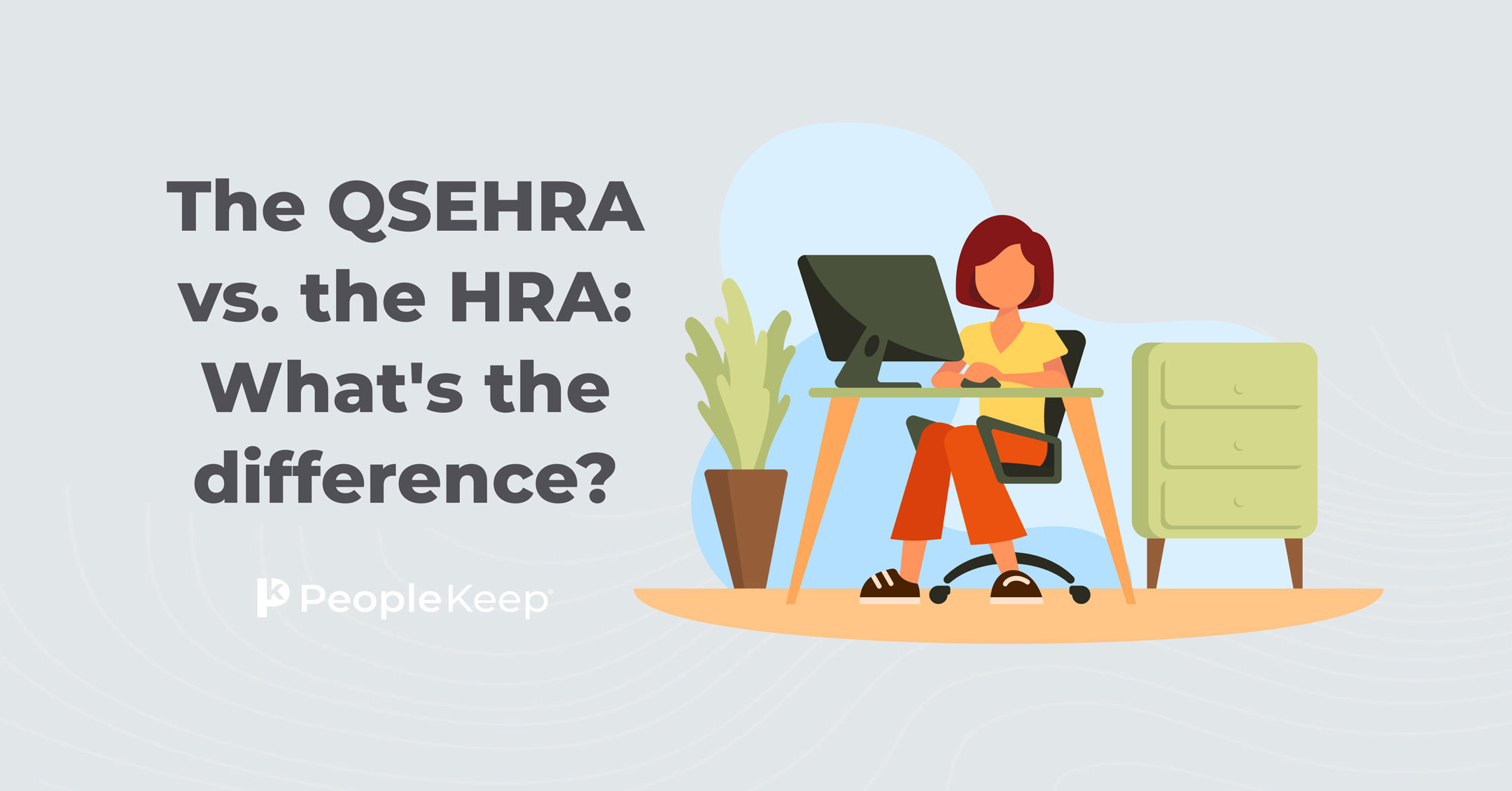How to use an HRA as a C corporation owner
By Holly Bengfort on December 7, 2023 at 12:15 PM
Small and midsize C corporation owners face unique challenges when it comes to employee healthcare expenses. Traditional group health insurance plans can be costly and restrictive, making it difficult to provide comprehensive coverage for both yourself and your employees.
However, a traditional group health plan isn’t your only choice. A health reimbursement arrangement (HRA) is a more flexible and cost-effective solution. Employers can reimburse their employees tax-free for qualifying medical expenses such as copayments, deductibles, and even individual health insurance premiums through an HRA.
In this article, we'll explore how C corporation owners can use an HRA to their advantage.
What is a C corporation?
A C corporation ("C corp") is any corporation that, under U.S. federal income tax law, is taxed separately from the business owner or owners. The government first taxes a corporation’s profits when it earns it and then again when the corporation distributes the profits to shareholders as dividends.
With a C corp, the corporation itself—not the shareholders that own it—is held legally liable for the actions and debts the business incurs.
So, if the business goes bankrupt, the shareholders aren't personally responsible for the debts and liabilities they would be if the organization was a sole proprietorship or a partnership.
Most major organizations (and some smaller organizations) are C corps for U.S. federal income tax purposes.
What is an HRA?
It's tough for many employers to keep up with the rising cost of health insurance. The HRA is an affordable alternative to annual rate hikes and one-size-fits-all health coverage.
An HRA is an IRS-approved, employer-funded medical reimbursement plan. Employers use an HRA to reimburse employees for their medical costs. This includes health insurance premiums, out-of-pocket medical expenses, or a combination of the two, depending on the type of HRA you offer.
Here are some examples of what's reimbursable with an HRA:
- Doctor's visits
- Chiropractic care
- Prescription drugs
- Over-the-counter medication
- Mental health counseling
These medical reimbursements are free of payroll taxes for employers. They're also tax-free to employees as long as they have a qualifying policy that provides minimum essential coverage (MEC), such as a plan purchased on the federal Health Insurance Marketplace.
How does an HRA work for C corps?
What's unique about C corps is that both the employees and the owner of a C corp can use an HRA to get 100% tax-free reimbursements for qualifying medical expenses for themselves as well as their family members.
This is because a business owner must be an employee of their organization to be eligible to participate in an HRA. Because a C corp is a legal entity separate from its owner, that means the owner is an employee and can participate in their organization's HRA.
On the other hand, the IRS doesn’t consider S corporation as owners employees but as self-employed business owners. S corporations aren't subject to corporate income tax—instead, the IRS individually taxes shareholders. That means owners are ineligible to receive reimbursements through an HRA.
As a C corp owner, you not only have the freedom to participate in your organization's HRA but also the flexibility to design it however you choose. Depending on the type of HRA you're offering, employers may even be able to set up unique allowance amounts for different types of employees, including the owner.
With the individual coverage HRA (ICHRA), you can divide your eligible employees into classes. This allows you to legally offer different benefits and allowances to different groups of employees based on their job criteria. For example, a full-time employee could have a monthly allowance of $1,000. In contrast, a part-time employee could have an ICHRA allowance of $500.
However, with the qualified small employer HRA (QSEHRA), you can only offer different allowances to employees by family status, such as single or married, or employees with dependents.
What are the benefits for C corps that use an HRA?
With an HRA, C corps can take advantage of tax benefits for themselves, their family, their organization, and their employees.
Reimbursements received are tax-free
As previously mentioned, employees with MEC receive tax-free reimbursement for their qualified health expenses.
Here are other basic requirements for tax-free reimbursement:
- The employer solely funds the HRA
- An HRA doesn't qualify for exclusion of benefits from income tax if an employee has the option of receiving cash or some other taxable or non-taxable benefit other than the reimbursement of eligible medical care expenses.
- An HRA doesn't qualify for exclusion of benefits from income tax if an employee has the option of receiving cash or some other taxable or non-taxable benefit other than the reimbursement of eligible medical care expenses.
- Only substantiated medical expenses are reimbursable
- Qualified medical expenses are those specified in the required HRA plan documents and are generally those that would qualify for the itemized deduction for medical and dental expenses on Schedule A of Form 1040—IRS Publication 502 outlines these expenses.
Reimbursements paid by the organization are tax-deductible
Not only does the HRA offer tax benefits to the participants, but also to the organization itself. All HRA reimbursements to employees are tax-deductible to the organization.
For example, if a C corp reimburses employees for $285 of their $300 allowance, the real cost to the organization is also $285. That's because FICA/FUTA payroll taxes don't apply to HRA reimbursements. And all money employees don't use by the end of the plan year stays with the organization.
What are the additional benefits of offering an HRA?
On top of tax savings for both you and your employees, there are several other perks to offering an HRA.
Control healthcare costs
First and foremost, using an HRA allows you to control healthcare costs while providing valuable benefits to your employees. With an HRA, you can set a specific budget for healthcare expenses and allocate funds accordingly. This allows you to tailor your benefits package to meet the unique needs of your employees and your business while maintaining cost control.
Customize coverage
Another advantage of using an HRA as a C corporation owner is its flexibility in designing your benefits package. Unlike traditional group health insurance plans, an HRA allows you to customize the level of coverage and the types of out-of-pocket medical expenses that are eligible for reimbursement. This flexibility enables you to align your benefits with your business goals and the needs of your employees. Whether you want your pre-tax dollars to go toward preventive care, dental and vision care expenses, or a combination of various healthcare costs, you can tailor an HRA to suit your specific requirements.
Empower employees
Traditional group coverage doesn't give employees any control over their coverage, network, or healthcare premiums. In contrast, an HRA allows employees to choose the individual health plan coverage that works best for them. They have the freedom to find a policy that aligns with their personal health, budget, and family situation.
Boost recruitment and retention
Using an HRA can help attract and retain top talent at your organization. Along with reasonable compensation, today's job seekers expect a plethora of perks. According to our 2022 Employee Benefits Survey Report, 82% of employees say that the benefits package an employer offers is an important factor in whether or not they accept a job.
Additional findings from our report show that 87% of employees value health benefits, such as health insurance coverage. Including an HRA as part of a comprehensive benefits package can make your company more competitive in a tight labor market. By providing an HRA, you demonstrate a commitment to the well-being of your employees and their families, which can also enhance job satisfaction and loyalty.
Compliance
Lastly, using an HRA as a C corporation owner allows you to stay compliant with legal requirements and regulations. Health insurance laws and regulations are constantly evolving. This can make it challenging for businesses to keep up with the changes. By offering an HRA, you can ensure that you’re providing healthcare benefits in a manner that’s compliant with ERISA and the Affordable Care Act.
Plus, when you team up with PeopleKeep, we handle the paperwork for you. Our personalized benefits administration platform makes it easy to set up and manage HRAs in just minutes each month. This gives you more time to focus on running your business.
Conclusion
For C corporations, HRAs are excellent alternatives to traditional group health plans. From the benefit of owners being able to join their employees in getting tax-free reimbursements to the tax advantages and deductions that save the organization money, an HRA offers a range of benefits for both you and your employees.
This article was originally published on August 28, 2013. It was last updated December 7, 2023.
Check out more resources
See these related articles

What is a burden rate?
The burden rate is the total indirect costs associated with employing a worker, such as benefits, taxes, and overhead. Learn more about burden rates here!

How to report employer-sponsored health benefits on Form W-2
Unsure how to report employer-sponsored health benefits on your Form W-2? This blog has clear explanations and examples to help you navigate the process.

The QSEHRA vs. the HRA: What's the difference?
Confused about the difference between an HRA and a QSEHRA? This guide explains how a QSEHRA compares to other types of HRAs.



